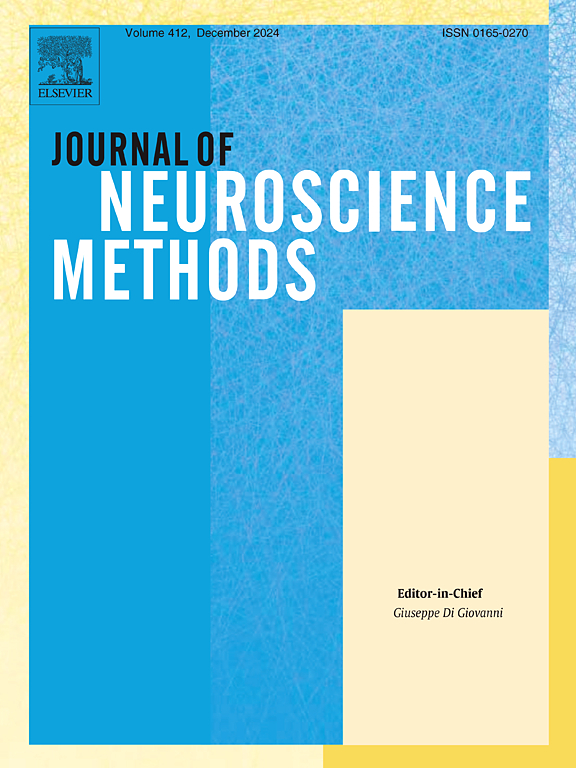混合脑机接口用于上肢康复:将心肌梗死与外周野SSVEP刺激相结合
IF 2.7
4区 医学
Q2 BIOCHEMICAL RESEARCH METHODS
引用次数: 0
摘要
基于脑机接口(bci)的康复系统在脑卒中患者中具有重要的潜力。现有的系统主要依赖于运动图像(MI),在性能和用户舒适度方面都有改进的空间。本研究旨在通过开发一种将MI与外围视野刺激引发的稳态视觉诱发电位(SSVEPs)相结合的混合脑机接口系统来增强这些方面。新方法该系统与一个柔软的机械手相结合,形成一个闭环框架。该设计结合了7°和10°偏心的同心圆作为外围刺激,分别以34 Hz和35 Hz的频率闪烁左右两侧,以唤起ssvep。一个左/右抓取动作的中心视频(304 ×304像素)引导被试通过简单地关注它来执行同步MI任务,这也可以完成SSVEP任务。ResultsThe离线11个主题的结果表明,MI的分类结果是70.65 ±3.38 %,和 SSVEP的结果是96.04±3.33 %,并融合结果达到96.23 ±3.21 %,这证实了融合方法的有效性。11名受试者的在线实验结果为97.12 ± 2.09 %,验证了系统的可行性。与现有方法的比较与现有系统相比,建议的系统在保证系统性能的同时提高了舒适度。结论通过离线和在线实验验证了该系统的可行性,促进了临床应用。本文章由计算机程序翻译,如有差异,请以英文原文为准。
Hybrid BCI for upper limb rehabilitation: integrating MI with peripheral field SSVEP stimulation
Background
Rehabilitation systems based on brain-computer interfaces (BCIs) hold significant potential for stroke patients. Existing systems, predominantly relying on motor imagery (MI), have room for improvement in both performance and user comfort. This study aims to enhance these aspects by developing a hybrid BCI system integrating MI with steady-state visual evoked potentials (SSVEPs) elicited by peripheral visual field stimulation.
New methods
The system is coupled with a soft robotic hand for feedback, forming a closed-loop framework. The design incorporates concentric rings with 7° and 10° eccentricities as peripheral stimuli, flashing at frequencies of 34 Hz and 35 Hz for left and right sides, respectively, to evoke SSVEPs. A central video (304 ×304 pixels) of left-hand/right-hand grasping motions guides subjects in performing synchronized MI tasks simply by focusing on it, which could also complete the SSVEP task.
Results
The offline results of 11 subjects showed that the classification result of MI was 70.65 ± 3.38 %, and the SSVEP result was 96.04 ± 3.33 %, and the fusion result reached 96.23 ± 3.21 %, which confirmed the validity of the fusion method. The online experiment of 11 subjects achieved a result of 97.12 ± 2.09 %, validating the feasibility of the system.
Comparison with existing methods
The proposed system improves the comfort level while ensuring the performance of the system as compared to the existing systems.
Conclusion
The feasibility of the proposed system was verified by offline and online experiments to advance the clinical applications.
求助全文
通过发布文献求助,成功后即可免费获取论文全文。
去求助
来源期刊

Journal of Neuroscience Methods
医学-神经科学
CiteScore
7.10
自引率
3.30%
发文量
226
审稿时长
52 days
期刊介绍:
The Journal of Neuroscience Methods publishes papers that describe new methods that are specifically for neuroscience research conducted in invertebrates, vertebrates or in man. Major methodological improvements or important refinements of established neuroscience methods are also considered for publication. The Journal''s Scope includes all aspects of contemporary neuroscience research, including anatomical, behavioural, biochemical, cellular, computational, molecular, invasive and non-invasive imaging, optogenetic, and physiological research investigations.
 求助内容:
求助内容: 应助结果提醒方式:
应助结果提醒方式:


